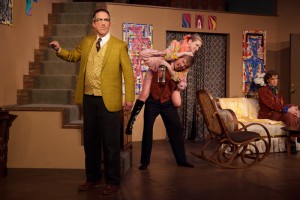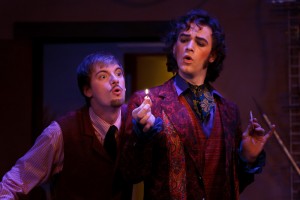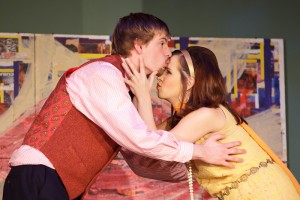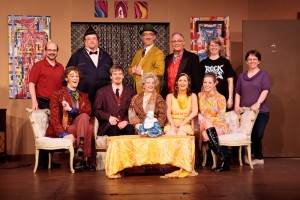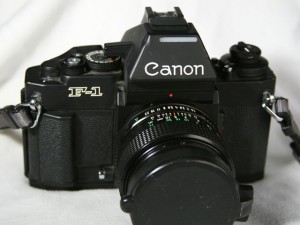
The "new" version Canon F1
I watched a podcast recently about some photography-related debate, and they mentioned the age-old Canon versus Nikon arguments we sometimes hear. Similar to the Mac versus PC, Coke versus Pepsi ad infinitum.
I tend to avoid these debates unless they’re becoming silly and fun (when the “debaters” all know there’s no one answer and are just joking around). But I know there are folks out there who want to know what to buy, which direction to go. I shoot Canon, and here’s why.
Back in a former life, I was a college student during the week and a skydiver on weekends. I drove 70 miles from Columbus to Xenia, Ohio every weekend to jump out of airplanes. The old adage goes, why would you jump out of perfectly good airplanes. The old answer was, you haven’t seen these airplanes! Exaggeration, but jump planes are a bit skimpy on amenities. Like seats and any instrument that might not be needed.
I had borrowed an SLR (can’t remember the brand, but it had screw-on lenses, called universal mount at the time, I believe). But I wanted to take freefall photos. You don’t just jump carrying a camera. It needs to be mounted usually to your helmet so you can aim with your head. A good friend of mine, Dick Boden, was an active, and very good photographer. He shot Olympus. He owned both the OM-1 and the then fairly new OM-2. Olympus was an innovator and made some incredibly small SLR cameras.
To shoot in freefall required a motor drive. This was a gizmo that attached to the camera and automatically advanced the film for you. They were available only for professional grade cameras, and they were expensive. But they could push film through at 5 frames per second or more. Remember, we’re talking film here. I think Dick could use his motor drive on either of his cameras.
Dick knew I wanted to shoot in freefall. One day he told me about this new camera. Canon was coming out with the AE-1, a reasonably priced SLR, for which they were going to be selling what they called a power winder. Not as fast as a motor drive, but hugely cheaper. Dick was an engineer, and he praised Canon’s cool use of metalized plastic to reduce weight and cost. The AE-1 had shutter-priority automatic exposure, and a ton of electronics which was very new at the time. Dick also praised Canon glass, their line of excellent lenses. It was a system one could grow into.
As I said, I was a college student. Even though I worked part time, the low entry price and the ability to do what I wanted to do won me over. I soon purchased one of the first AE-1s and a power winder. All that was left was to build a helmet mount for it and buy a very long remote release cord that could be threaded through a jumpsuit to my hand. The other thing the good freefall shooters used was a Newton sight. This let them actually aim the camera pretty well. Something else I couldn’t afford. I just aimed my head and hoped for the best.
As I graduated from college, moved into the next phase of my life, moved away from home, and stopped jumping, my AE-1 came with me and served me well. As my interest in photography grew, I eventually moved up to Canon’s “new” F1 – they developed a new version of their top-of-the-line camera but kept the name. In today’s lingo, they would have called it the F1 MkII. It was a great camera, and it was clear what differentiated “pro” gear from “consumer” gear. It was solid, heavy, and filled with features a pro would want. For instance, as Canon moved electronics into their line, the F1 could still shoot at 1/90 second with no battery. A pro needs to be able to get the shot.
I grew comfortable with Canon gear. Their lenses attach the right way. They feel good in my hands.
Photography took a back seat to other activities – like children – for a while. I was excited about the prospects of digital cameras, and Canon was there early. But the cost was prohibitive for me at the time. If I needed to shoot really good photos, I used my F1 and film. Again, Canon came through with the original Digital Rebel, the first DSLR under $1000. It gave me a chance to jump in to digital. Unfortunately, my lenses did not work on the Rebel. I never made the move to autofocus in the film era.
So, I could have switched systems when entering digital without affecting my previous investment. But I trusted Canon, and they again had the right product at the right time to pull me in. Nikon makes great gear, no question. But Canon had an affordable entry vehicle and Nikon, at that time, did not.
There you have it. I’m a Canon shooter and have been since 1976. Does Nikon have some technology I wish Canon had? Yes, especially in their speedlight system. It’s just a bit more nimble, although Canon now shows all the settings on the camera body in English which is a huge improvement. But photos are generally on par. And the real differentiator is the device we hold up behind the camera – the one with the eyeball looking into the viewfinder.
What about the other manufacturers? Minolta gave way to Sony, and Olympus is still with us. Both appear to produce good equipment. Neither has the depth of Canon and Nikon in terms of the range of lenses and the availability of full size (35mm film-size) sensors. They do bring some new, interesting features to the marketplace. In pro ranks, they are easily overshadowed by the two big names, and I think the huge systems behind the cameras are a factor.
If you’re buying a DSLR, what should you do? You probably won’t go wrong with any name-brand camera. And you have to ask yourself, “am I really going to buy more lenses or a separate flash?” If the answer is no, then try several cameras, read some reviews, feel how they fit in your hands. You’ll be fine. If the answer is yes, than Canon or Nikon may be the better fit. Find out what your friends are shooting. They can help answer questions, and you can share lenses.
I guess the important thing is to jump in. The water’s great here in the DSLR pool. It’s a joy to shoot with a great camera, and it can be a platform for learning and exploring your artistic side. If you let it.
